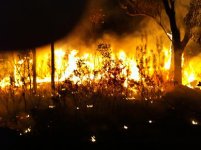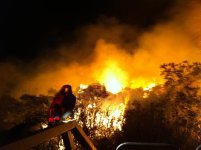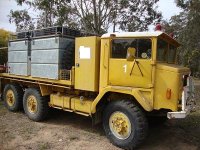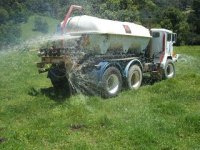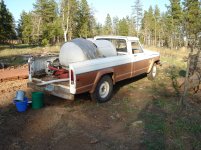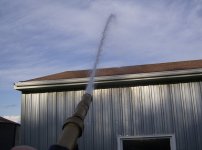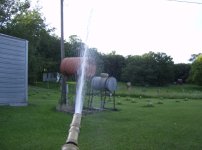scollins
Silver Member
YES
A "canteen holder" or "holder" for a 1-gallon water jug would be good to add, in addition to just a bottle of water on the tractor.
I have a small cooler with food and water that goes in the cart before a prescribed burning or pile burning operation.
I have a 50 caliber ammo box for the fire shelter. That reminds me. While I'm waiting for the North Dakota blizzard to end, sounds like a good project to bolt one to the cart for the shelter.
I added a drip torch holder since I took that photo..
I try to leave room for the leaf blower or chain saw.
In your neck of the woods, I would keep the cart (or your tractor) on a wide fire break or mowed fuel break during a fire. Around here, I park the rig in the black or on a wide mowed fire break. The GPM is not enough for your neck of the woods but would be great for putting out spot fires in the yard within your 100 foot wide brushed out area around your house (unless they force you to evacuate).
SC
A "canteen holder" or "holder" for a 1-gallon water jug would be good to add, in addition to just a bottle of water on the tractor.
I have a small cooler with food and water that goes in the cart before a prescribed burning or pile burning operation.
I have a 50 caliber ammo box for the fire shelter. That reminds me. While I'm waiting for the North Dakota blizzard to end, sounds like a good project to bolt one to the cart for the shelter.
I added a drip torch holder since I took that photo..
I try to leave room for the leaf blower or chain saw.
In your neck of the woods, I would keep the cart (or your tractor) on a wide fire break or mowed fuel break during a fire. Around here, I park the rig in the black or on a wide mowed fire break. The GPM is not enough for your neck of the woods but would be great for putting out spot fires in the yard within your 100 foot wide brushed out area around your house (unless they force you to evacuate).
SC

